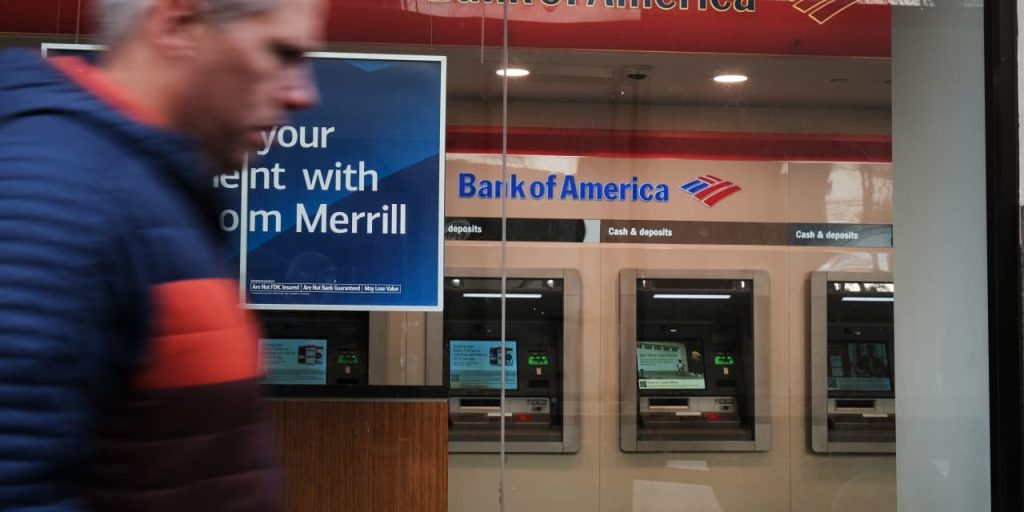Bank of America
‘s third-quarter earnings topped expectations, thanks in part to higher interest rates. But those high rates also spelled problems for the bank’s balance sheet.
Profit at the bank grew 10% to $7.8 billion, amounting to earnings of 90 cents a share on revenue of $25.2 billion. Analysts surveyed by FactSet projected earnings of 83 cents a share on revenue of $25.1 billion.
Net interest income grew 4% to $14.4 billion because of higher interest rates and loan growth.
“Our teammates delivered another strong quarter,” Brian Moynihan, chief executive of
Bank of America,
said Tuesday. “We did this in a healthy but slowing economy that saw U.S. consumer spending still ahead of last year but continuing to slow. Our growth in revenue and earnings allowed us to continue our investments in our people and technology to drive an enhanced client experience.”
The stock was up 1% in premarket trading.
So far, it’s been a strong earnings season for lenders as
JPMorgan Chase
(JPM),
Citigroup
(C), and
Wells Fargo
(WFC) all topped expectations when posting third- quarter earnings ast week. JPMorgan so far has come on the strongest, notching a 30% year-over-year jump in net interest income because of its acquisition of
First Republic Bank
in May. Even so, JPMorgan Chief Executive Jamie Dimon cautioned last week that the bank may be “over-earning” on net interest income.
With Wall Street tempering its expectations on further net interest income gains, investors will be looking to other parts of Bank of America’s business as it posts results—and that means the balance sheet.
Barron’s has reported that Bank of America has emerged as the “problem child” of the big banks because its holdings of low-yielding mortgage securities and government debt have it sitting on hefty unrealized losses on its balance sheet due to the Federal Reserve rapidly hiking interest rates.
Those unrealized losses in the bank’s held-to-maturity assets climbed to $131.6 billion in the third quarter from $105.8 billion in the prior quarter due to the recent spike in bond yields. The losses aren’t expected to be realized but they’re still a hindrance for the bank.
It’s a problem that Bank of America is well aware of.
“You know that we’re taking the portfolio and just making it smaller,” Chief Financial Officer Alastair Borthwick told analysts on the bank’s first-quarter earnings call in April. “We’re taking all of that and plowing it into cash and loans.”
Bank of America shares have fallen 18% this year; the
KBW Nasdaq Bank Index
(BKX) is off by 23%.
Write to Carleton English at carleton.english@dowjones.com
Read the full article here




